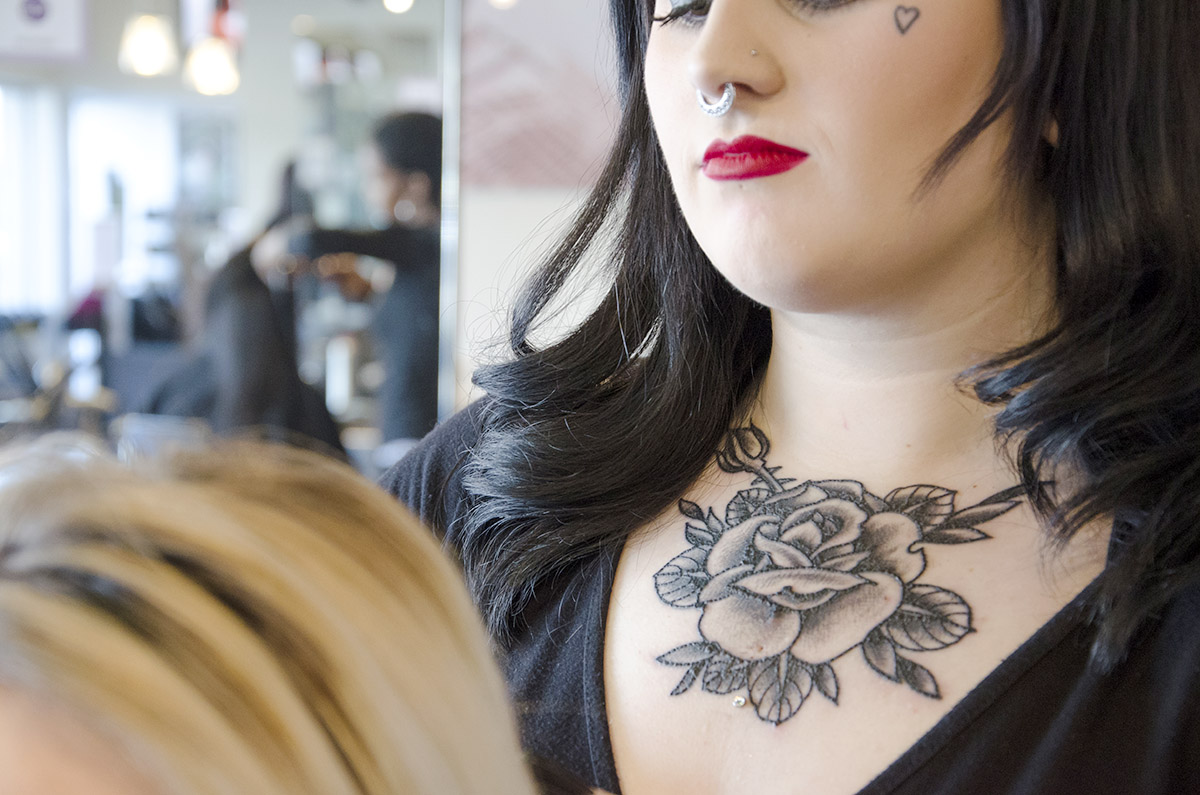
By Mike Abell

Student Jacob Lewis, now 24, got his first tattoo on his left forearm shortly after he enlisted in the Air Force under active-duty in 2010. For him, tattoos in the workplace haven’t been too much of an issue.
He always wanted a tattoo, despite the fact his parents never really approved of them. His first tattoo simply spelled out “no regret,” and it signified his free spirit. In the Air Force he was allowed to have tattoos as long as they were a certain size. Although Lewis is now part of the National Guard and faces more challenges than he used to.
“I still experience some of it. Now I have a half-sleeve and I have to have it covered up whenever I’m in uniform.”
Lewis is now a server at Olive Garden. He said that the tattoo policy has become less and less strict, although he did say that he gets mixed reactions from customers when they notice his tattoos.
“When I originally started at Olive Garden, the policy was ‘no tattoos,’ so you had to cover them up. Since I’ve been in, it’s actually changed. You can just roll your sleeves up now as long as [the tattoo] isn’t offensive. So I work with my sleeves rolled up now,” said Lewis. “But I’m constantly badgered about my tattoos by the customers. They’re brought up all the time when I’m serving.”
However, not all of the feedback has been negative. Lewis said that customers will often ask about his tattoos out of interest or curiosity.

Photo by Julia Larberg
“Sometimes they might ask me who I got them done by. Plenty of it’s negative and plenty of it’s positive.”
One of his more recent tattoos is a small memorial of sorts for his older brother on his right forearm. His brother passed away in 2013 from muscular dystrophy. The tattoo is a portrait of his brothers favorite fictional characters.
Lewis said that he believed tattoos are becoming more culturally accepted than ever.
“Yeah, like I said, you know when I joined the military they sort of eased up on their policy — same with Olive Garden. They used to be more strict; their policy has changed a lot over time.”
Although tattoos are just now becoming more relevant in the United States, they’ve always been relevant in some non-western cultures.
“There is a tremendous difference between the use of tattoos in non-western societies as opposed to how we see them used here in the US,” said Sandra Moran, adjunct anthropology professor.
Additionally, Moran explained the relevance and history of tattoos in indigenous societies.
“In most indigenous societies, tattooing is part of their culture and deeply rooted in tradition. Often, it’s an identifier – a way of illustrating an individual’s lineage, your status or rank, or what rites of passage you’ve endured. The word itself stems from the Samoan word ‘tatau,’ which means “to mark,” she said.
Furthermore, tattoos have become even more accepted as time has gone on, according to Moran.
“In many ways, Western society has appropriated this practice. Prior to the Y-Generation, tattoos were seen only in certain instances and often on certain people. They often had a connotation of a person who had rebelled against society,” she said. “But beginning with the Y Generation, we’ve seen a change in which tattooing has become almost mainstream. The last statistics of which I am aware of indicated that in the US, 40 percent of the people in this generation have at least one tattoo.”
Gallery: People with tattoos in the workplace
Photos by Anya Ivansteva
























